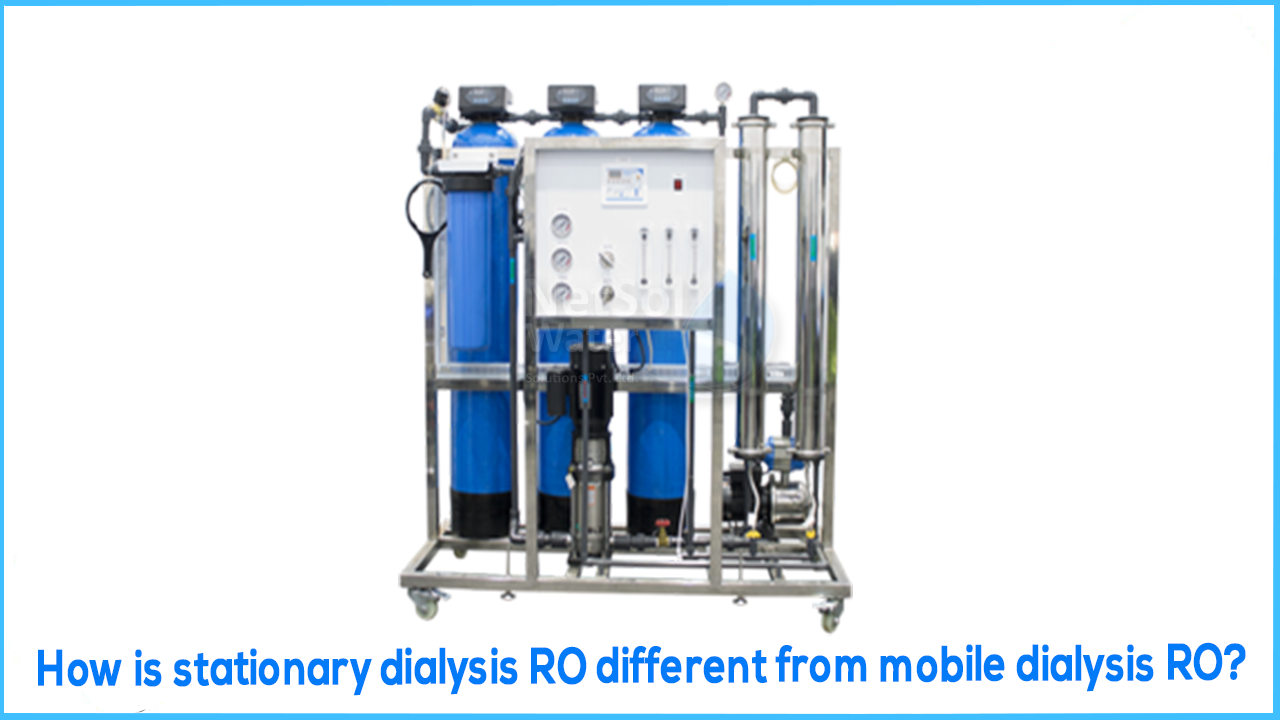WHAT IS DIALYSIS?
Dialysis is a blood cleaning procedure used when a person's kidneys do not function properly (around 10 to 15%). The procedure involves the use of an artificial kidney, also known as a dialyzer, in which blood contaminants are filtered through a thin membrane into a concentrate fluid known as dialysate. The dialysate is composed of the following components: bicarbonate, which can be sodium bicarbonate or sodium chloride; acid, which contains chloride salts of sodium, potassium, calcium, magnesium, acetate (or citrate), and glucose and ultra-pure water as a mixing medium.
TYPES OF DIALYSIS
Dialysis is divided into two types: hemodialysis and peritoneal dialysis.
HAEMODIALYSIS: During the procedure, a tube is attached to a needle in your arm. Blood flows through the tube and into an external machine where it is filtered before returning to the arm via another tube.
PERITONEAL DIALYSIS: Peritoneal dialysis uses the inside lining of your abdomen as a filter rather than a machine. The peritoneum, like the kidneys, contains thousands of tiny blood vessels, making it an effective filter.
REVERSE OSMOSIS IN KIDNEY DIALYSIS
Reverse osmosis is the process of driving a solvent through a membrane from a region of high solute concentration to a region of low salt concentration by producing a pressure greater than the osmotic pressure.The RO machine produces two types of water: product water and reject water. Product water is the ultrapure water that enters the hemodialysis machine and is used to mix the dialysate for your dialysis treatment. After being flushed down the drain, the reject water contains the bacteria that was removed from the water and is discarded. Certain conditions must be met when using a home hemodialysis machine with a portable RO.The RO must be linked to a water supply that can deliver at least two gallons per minute. Similarly, the drain that receives used dialysis fluid and reject water from the RO must have a capacity of at least two gallons per minute.
DIFFERENCE BETWEEN STATIONARY REVERSE OSMOSIS AND MOBILE REVERSE OSMOSIS
The Stationary Dialysis RO is used in multipotent dialysis centers, and the Mobile Dialysis RO is used in situations where patients have limited mobility, such as ER operations or ICU (Intensive Care Unit) treatments.
KEY FEATURES OF MOBILE REVERSE OSMOSIS
- The monitoring screen ensures that the water product meets the required standard both before and during dialysis.
- In the event of a high salinity feed water or low-pressure system, the emergency protection will react appropriately and send a message to the operator.
- The permeate capacity is 90 l/h.
- Automatic rinse cycles aid in keeping water quality under control.
- The ability to communicate easily with the operator simplifies system operation.
- Pretreatment of water is included. It is made up of sediment and activated carbon filters that are used to remove suspended solids and residual chlorine from the incoming feed water.
- The conductivity of feed and permeate water is displayed for the customer's peace of mind, ensuring that the water meets quality standards.
- The pressure switch protects the system in the event that the feed water supply is unexpectedly cut off.
KEY FEATURES OF STATIONARY REVERSE OSMOSIS
- It has a stainless-steel multistage pump and pressure vessels.
- It has a PLC-controlled control panel and HMI for operator interface.
- Frames are Aluminum Powder Coated.
- An electrical apparatus.
- Sediment 5 Micron Product TDS Monitor Permeate/Concentrate Flowmeters
- Protection against high and low pressures
- It has Inlet Valve (Automatic).
- Pretreatment for Flush and Post-Flush Sample Valves with Lockouts that have been factory performance tested
- It has gauges of pressure and connections of cleaning.



